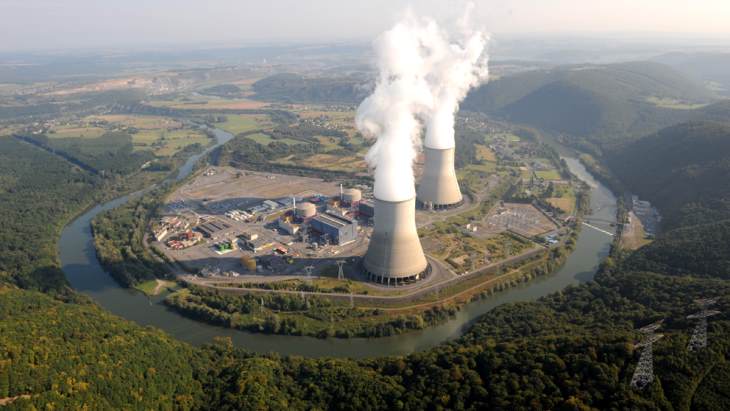The French nuclear power operator EDF says that the programme of inspections and repairs related to the stress corrosion issue means it has increased the hit it expects to take to its earnings by a further EUR4.5 billion (USD4.7 million) from the EUR14 billion estimated at the start of May.

EDF's Chooz nuclear power plant in north-eastern France (Image: EDF)
It has also cut again its estimated nuclear output for the current year, to 280-300TWh, compared with the previous expectation of 295-315TWh.
There are currently 12 nuclear power reactors ofline and being inspected for stress corrosion.
In a statement the company said:
Result of the metallurgical examinations carried out on samples taken from the pipes of the auxiliary circuits of the reactors of Civaux 1, Chooz 1 and Penly 1 confirmed the presence of stress corrosion near welds of the RIS (safety injection circuit) and RRA (shutdown reactor cooling circuit) circuits.
Checks and examinations carried out on Chinon B3 confirm the absence of stress corrosion on the SIS circuit. Evidence of stress corrosion was located on a weld of the RRA circuit.
Checks and investigations are ongoing on the other eight prioritised reactors (Civaux 2, Chooz 2, Cattenom 3, Bugey 3, Bugey 4, Flamanville 1, Flamanville 2 and Golfech 1).
EDF said it had "carried out ultrasonic inspections, investigations on pipes samples, digital welding simulations and studies to calculate the speed of propagation of stress corrosion. At this stage, these analyses allow EDF to confirm slow stress-corrosion propagation and to observe the existence of a compression zone which blocks the propagation of the phenomenon".
Earlier this week Bernard Doroszczuk, President of France’s Autorité de Sûreté Nucléaire (ASN), told a parliamentary hearing that there had been checks of 35 welds so far, a third of the total to be examined by the end of June.
Doroszczuk said that it seemed that EDF’s older 900 MW reactors - there are 32 of them in total - were not as affected by the corrosion problems as the others, where the initial design by Westinghouse had been "Frenchified" with the new "geometry of the lines" now seen as a more likely cause of the issue than the welds themselves. This new "geometry of the lines" promotes a phenomenon of thermal stratification of the fluid at the top and bottom of the pipe, which generates stress in the weld zones, he said.
He was reassuring to parliamentarians about EDF’s ability to "control and put the reactor into a safe state" thanks to the "detection of leaks before rupture".
EDF said that discussions were on-going with ASN about the inspection and repair programme, but said that it "considers that new reactor outages do not need to be scheduled to carry out checks".
It said that the inspection programme for the 1300 MW reactors "will be established after integrating the lessons learned from the appraisals and checks in progress on the auxiliary circuits of the Penly 1 reactor".
In its statement EDF also said: "The nuclear industry is making an unprecedented, concerted effort to replace the portions of the pipes affected by stress corrosion.
"EDF has started to procure tubes and elbows from European steelmakers. Production rates have been optimised to deliver the first spare parts before summer.
"All of the qualified suppliers to carry out these activities are now preparing for the work. Dozens of welders have been specially trained to guarantee high-quality workmanship."
The company said that at this stage and "in the expectation of checks and repairs to be completed, the 2023 French nuclear output estimate is not changed" at 300-330 TWh.
Researched and written by World Nuclear News